Future of the universe
Somehow I came across an interesting time-tape of the alleged events of the universe on Wikipedia, but it was rather poor and without images, so I climbed into Google and searched for the future time line, and the first thing I saw was this site . I really liked this article and I decided to translate it, at the same time and read it better.
All that is stated here - only assumptions and theories, it is quite possible that all or some of the events will be different. The entire post is presented in the form of a time-tape from 10,000 to 10,100 years, and contains many interesting pictures and links to the wiki, reading a lot and interesting.
This Kiel is one of the largest and most unstable stars in our galaxy. Its temperature is so high that its gravity is not able to keep the gas flowing from its surface along the formed upstream from it. It was first noticed in 1843, when its magnitude (read the magnitude of the glow) reached -0.8, making it the second brightest star in the night sky.
She subsequently subsided for a while, and again "lit up" in the late 1990s. This fluctuation continues with periodic flashing and fading, and will continue until the inevitable happens. Unable to cope with its own mass and density, it collapses and then turns into one of the deadliest forces known in nature - into the hypernovae.
For a while, this colossal explosion illuminates the entire galaxy. It will be bright enough to notice from Earth during the daytime, while at night it is comparable to the full moon.
But much more harm will bring killer streams of gamma radiation emitted by a dying star. They will be thrown out at such high energies that even systems in thousands of light years from Eta Carinae will be affected. As a result, on numerous planets in our region of the Galaxy there will be an extinction of living organisms at this time.
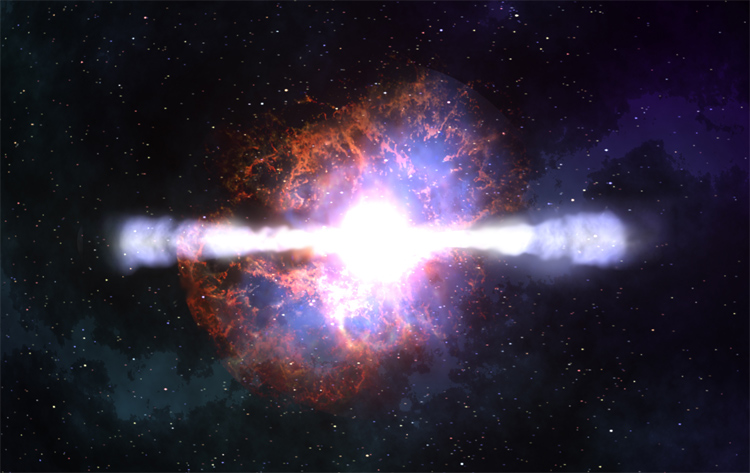
The Chernobyl explosion, which occurred in 1986, was the worst nuclear accident in history, infecting tens of thousands of square kilometers of land. The radiation at the center of this incident has now reached an insignificant level at which a person can live safely.
In any case, the old buildings on the site is long gone, and, in fact, the Earth is already completely unrecognizable.

')
The central region of the Galaxy is located 27-28 thousand light years from Earth. In its center lies the largest black hole in it - a supermassive black hole . Having passed through many millennia, the first wave of subluminal ships finally reached its environs.
There are no people on board, they are fully computerized and autonomous. Trillions, they are self-replicating using stellar and planetary material in their path. The systems on ships that appeared during this voyage evolved and evolved thanks to artificial intelligence. This is almost the same as the awakening of the galaxy itself and its acquisition of self-awareness.
There is no competition for owning the core of the galaxy. Wars, greed, and archaic concepts of nations and nationalities have long since disappeared, leaving only intellectual creations united by one common goal.

In addition to the black hole, there are dense clusters of ancient, metal-rich stars, separated by just a few light weeks or even days. They can provide innumerable reserves of resources for fleets arriving.
Gamma radiation is so high in this place that almost no biological creature is able to survive here, except for the strongest bacteria of extremophiles. If an observer could stand on a planet close to the galactic nucleus, the sky above him would look like a blinding screen of light and color.
Reaching the center of the galaxy, now all the forces will be directed to research its far side and the secrets that lie there. Dozens of globular star clusters have already been passed.

Proxima Centauri was the closest star to us before. Ross 248 is a red dwarf whose mass is about 12% of the mass of the Sun, and a radius of 16% of the radius of the Sun, and only 0.2% of its brightness. Nevertheless, it also experiences fluctuations, periodically fading out and flashing for a few minutes.
In 2010, the Ross 248 was 10.3 light years from Earth, with a radial velocity of 81km / s. In 35000 AD she is closer to us than Proxima Centauri. It will reach the point closest to us in 38000, having passed 3.1 light years, before another distance from us, moving farther from the Sun than Proxima Centauri, in 44000.

Launched by NASA in 1977, Voyager 1 continues to drift in interstellar space. Now it passes around AC + 79 3888, M-type stars from the Giraffe constellation, near the North Star. His next version, Voyager 2, will reach Sirius in about 298,000 AD.
KEO - should have been launched in 2012 (the launch was postponed until 2014) and was in orbit of the Earth for 50,000 years - the time elapsed since the first people began to draw in the caves.
The project was supported by UNESCO and ESA (European Space Agency) and other institutions.
People could post their messages. They were encoded into a glass, radiation-resistant DVD, along with instructions on how to assemble a DVD reader. A sample of human blood, earth, air and sea water was also placed on board.
The capsule itself is a hollow sphere, 80cm in diameter. A map of the Earth is engraved on the sphere, and the sphere itself is wrapped in a layer of aluminum, a thermal layer and several layers of titanium, separated by a vacuum. The sphere is resistant to cosmic radiation, atmospheric resistance (at the entrance) and the effects of space debris.
Placed into an orbit 1800km above the Earth, the satellite slowly approached it a few tens of meters each year. When he finally enters the atmosphere, his thermal layer will begin to emit a bright, artificial glow that signals his return.
VY Big Dog, about 1800-2100 times larger than our Sun, is the largest star in the Milky Way known to us, as well as the brightest. It is located 4900 light years from Earth, in the constellation Bolshoy Dog . It is considered very unstable, throwing a huge part of its mass into the surrounding nebula. In 100000, it finally exploded, leaving behind a supernova, bright enough to be seen in the daytime from Earth.

Proper movement — the constant movement of celestial bodies due to a change in their orbits or the testing of the consequences of the Big Bang, radically changed the view of the night sky from Earth. Stars simply move at different speeds, depending on how the star was formed from its parent cloud of dust. In the year 50,000, constellations began to blend into new forms, and in the year 200,000 they became completely unrecognizable. This includes such famous star groups as Ursa Major , Orion , Perseus and Gemini . As a result of changes in the axis of rotation of the Earth, Gamma Cepheus , Yota Cephei and Vega assumed the position of the Polar Star

Voyager 2 was the second unmanned probe launched in 1977 to explore planets outside the solar system. Identical in appearance and functionally with its previous version, Voyager 1, it was launched on a slower, tortuous path to stay in the ecliptic plane. This allowed him to visit around Uranus and Neptune, after using Saturn's gravity in 1981 and Uranus in 1986 to disperse.
In 2010, Voyager 2 was in the region of 92 AU. (13.75 billion kilometers) from the Sun, deep in a scattered disk , moving away by about 3.26 AU. in year.
The probe lives for thousands of years in the emptiness of interstellar space. He passes Sirius, leaving behind him more than 25 trillion miles traveled. Sirius - the brightest star in the earth's sky.
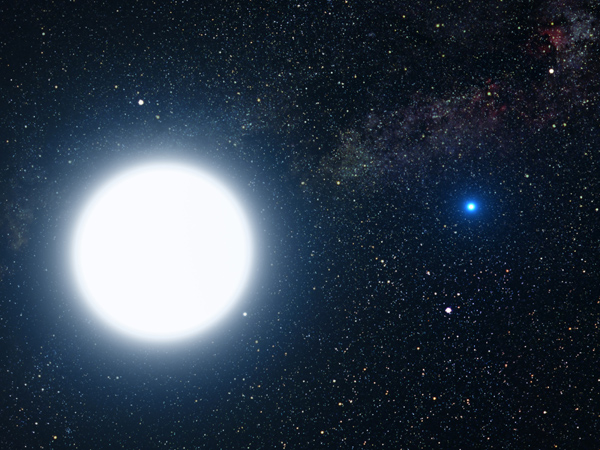
Pure-biological people are a great rarity now. Although free to come or go when they want, they have little or no influence on the governmental systems of the Earth or anything else that is completely subordinate to artificial intelligence. As a species, homo sapiens continued to evolve. This has led to an increase in the size of the skull, an almost complete absence of hair, lengthening of the limbs, a stronger immune system, and greatly increased longevity.
Most people have long gone from these primitive forms, going to robotization and reaching almost immortality. The entire Milky Way has been explored by these transhumans and their intellectual ships.
Traveling faster than the speed of light is now possible thanks to the Alcubierre engines , which are compact enough to be placed even in single-seater vessels. They use colossal energies, affecting the spatial matter in front of them and expanding behind them. This allows you to bypass the laws of relativity, and makes it possible to fly even to neighboring galaxies, like M31 (Andromeda) and M33 (Triangle) .
Computers the size of a planet are built in all local galaxies, using all the resources available to it. All "dead" planets, comets, moons and asteroids, which are now uninhabited, are being "rebuilt" into such machines, forming a huge network the size of millions of light years in space. Everyone is able to instantly contact anyone else, regardless of distance.
A few extraterrestrial (alien, previously unknown) civilizations have already made contact. Ancient ruins were also discovered in many worlds, indicating advanced civilizations that somehow became extinct or destroyed themselves in the distant past. Thousands of other planets have been discovered with rich ecosystems full of diverse vegetation and animal (or other) life. Most of the inhabitants of the fauna are small creatures or even insect-like creatures, but some are more developed and possess intelligence comparable to mammals such as dolphins, monkeys and cats (note lane - and damn it dogs, dogs!).

Most of the purely biological people avoid areas of the nucleus in all galaxies, they are filled with extremely high concentrations of gamma radiation, black holes and other hazards that are dangerous even with today's technology and protection.

An orange dwarf star, Glize 710, passes in 1.1 light years (70,000 AU) from the Sun. It is close enough for the Oort cloud surrounding the solar system to collapse (disperse) due to the gravitational interaction of Gliese 710 with it. A rain of comets heading for the solar system.
At the closest point of passage from Earth, Gliese 710 will be the brightest star visible from Earth.

Pioneer 10 was the first space probe to pass through the asteroid belt and pass over Jupiter, which he did in 1973. After completing his mission, he began to move in the direction of Aldebaran - the star of the red giant, for 65 light-years, located in the constellation Taurus .
The last contact with the probe was made in 2003, when a very weak signal was received from a vessel, 12 billion kilometers from Earth. The connection attempt in 2006 was unsuccessful.
Going at a speed of 2.6 au. per year (388954800km / year), Pioneer-10 approaches the Aldebaran system in 2000000.
The probe carries with it an “interstellar letter” for the case of its capture by aliens. This record depicts nude men and women, along with symbols that represent information about the probe.
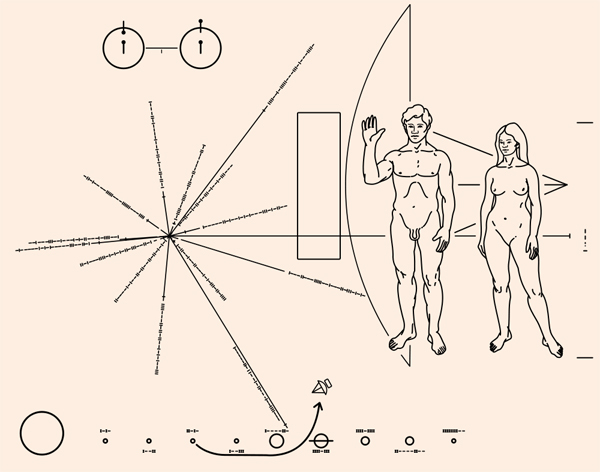
Pioneer-11 follower of Pioneer-10. Launched in 1973, it successfully completed a span across Saturn in 1979, before going out into interstellar space, departing in the opposite direction from Pioneer-10.
After four million years, it passes the Lambda of Orion, a B-type blue dwarf star, about 125 light years from Earth. Like its predecessor Pioneer 10, this probe also has a plate with a message from people.
Without the intervention of people, the famous faces of the presidents carved into this rock have now disappeared. The rate of erosion of granite is about one inch per 10,000 years.

Phobos - the largest and closest of the two satellites of Mars. Because its orbital period is shorter than the Mars day, tidal decelerations affected its orbital radius, bringing it closer to Mars by about 20 meters every 100 years.
On this day, he reached the limit of Roche .
Phobos begins to disintegrate. It gradually becomes a ring over the next three million years.
Neptune’s biggest moon, Triton , will share the same fate.
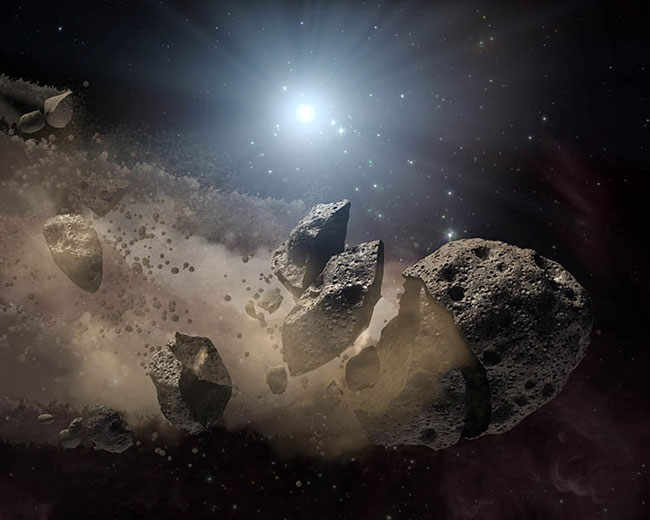
T Compass is a two-star system in the constellation of Compass . One of them is similar to our Sun, and the second is a white dwarf . Due to the strong gravitational effect of the white dwarf, a part of matter from another star constantly flows into it, which leads to periodic thermonuclear explosions.
Around this time, it reaches the Chandrasekhar limit , which leads to collapse, and now it is a type 1a supernova. After this catastrophic event, 10 million times more energy is released into space than with a conventional explosion, which leads to the appearance of a new star, which is comparable to 20 billion yttatons of TNT.
This system is only 3260 light years from Earth — close enough to hurt our solar system badly. If, of course, the Earth is not yet protected by the technologies developed over these years, gamma radiation can destroy the ozone layer, which will lead to mass extinctions of biological species.
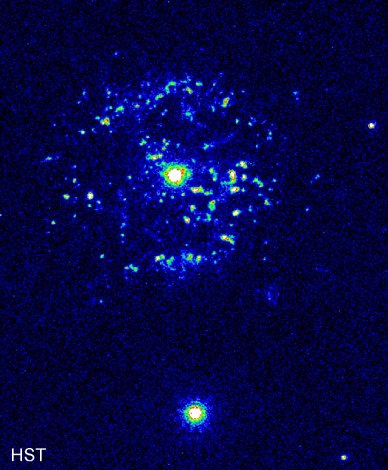
The triton fell apart, and a ring formed around Neptune.
This if we assume that Triton still exists in the form that we know. The remnants of humanity could transform it into artificial structures. Even Neptune may no longer exist, people could pump out all the hydrogen and helium from it for use in interstellar ships and industrial processes.
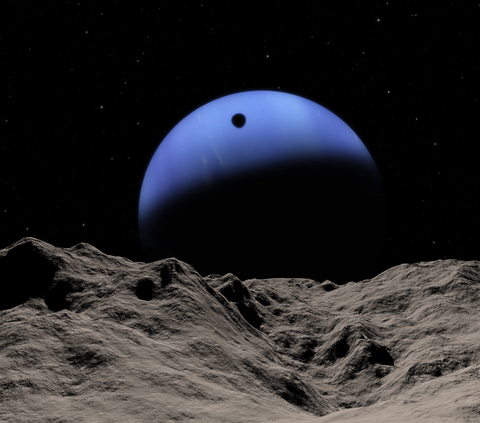
Accidents of similar magnitude usually occur every 100 million years. The last time this happened 65 million years ago, which led to the extinction of dinosaurs.
If humanity is not going to do something to protect the Earth, then all life left on the planet will be in danger of the same mass extinction this time.
Such a collision will release approximately 4 * 10 ^ 23 joules of energy, which is equivalent to 100 million megatons of TNT. For comparison, the most large-scale explosion made by man is the King of Bombs explosion, which is equivalent to only 50 megatons.
If it falls into the ocean, then a huge tsunami will reach the water, reaching thousands of feet in height.
A cloud of super-hot dust, ash and steam will scatter from the crater, which will be instantly dug by an asteroid during its “landing”. The exploded earth and pieces of the asteroid ejected from the atmosphere by an explosion will be heated, and after entering the atmosphere, they will even roast the surface of the Earth and cause huge fires. At this time, colossal shock waves trigger global earthquakes and volcanic eruptions. Raised dust and various particles will cover the entire surface of the Earth for several years, creating a harsh environment for the survival of living organisms. Shocking amounts of carbon dioxide released due to the destruction of carbonaceous rocks will cause a greenhouse effect.
For a long period of time, the sun's rays will not be able to reach the surface of the Earth, due to dust particles in the atmosphere, which will cause a strong cooling. Plants can not continue to live without photosynthesis, which would entail the disappearance of the entire food chain.

As a result of this, there is no longer the Mediterranean. The Red Sea, the Black Sea and the Caspian Sea also disappeared. At the same time, the Atlantic Ocean continues to expand, and Southeast Asia merges with Australia.
Our galaxy is surrounded by dozens of smaller dwarf galaxies. They sometimes pass through the disk of the Milky Way, partially destroying it and themselves. One of these cases occurred approximately 100 million years BC. This was confirmed by observations of 300,000 nearby stars, the motion of which showed the echo of the “bell ringing”. The stars moved up and down at speeds from 20 to 30 kilometers per second, rotating around the center of the galaxy at a speed of 220 km / s.
Another 100 million years passed before the motion of the stars stabilized. Now there is no north-south asymmetry and the vertical motions of the stars are back to their equilibrium states.

The Mid-Atlantic Ridge makes North and South America and Africa move together. Australia has completely merged with Indonesia and Antarctica.
At this moment, our Sun has completed another revolution around the Galaxy - it has turned 21 galactic years.
The sun's orbit is distantly elliptical, impaired due to galactic spiral arms and uneven mass distribution. In addition, the Sun hovers up and down relative to the galactic plane, about 2.7 times per revolution.
The passage of the Sun through the sleeves with greater density coincided with mass extinctions on Earth, as a result of the increasing frequency of collisions with cosmic bodies and a large amount of incoming energy on the planet.
The orbital speed of the Sun relative to the center of the Galaxy is approximately 251km / s.
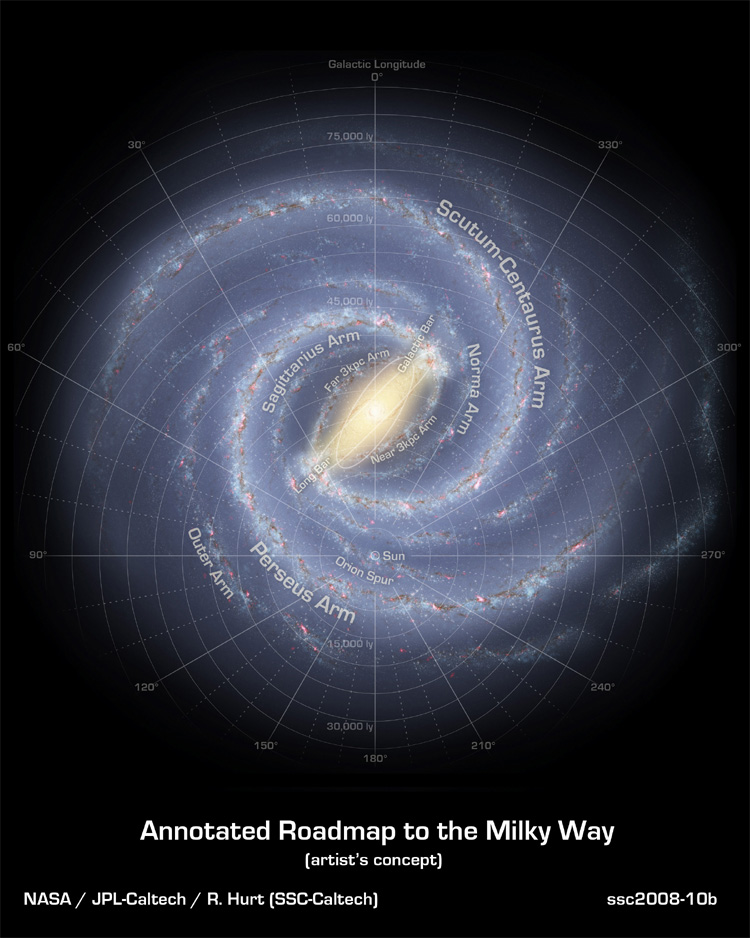
The next Pangea - Pangea Ultima , is formed from the confluence of all continents.
Our Sun is getting noticeably hotter and brighter, the average temperatures on the planets rise by a few degrees. Most of the Earth is covered with deserts.
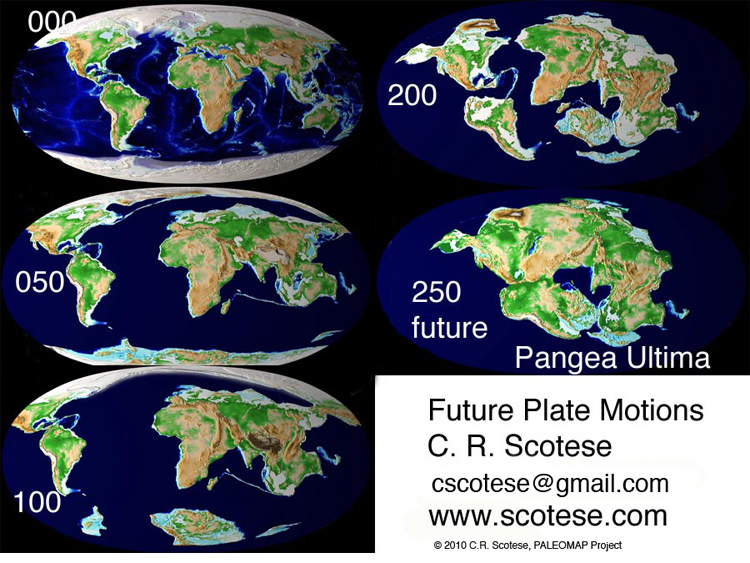
Due to the tidal acceleration , the moon was moving away from the Earth by about 3.8 cm per year. In 600 million a year, the distance has increased by about 23000km. At the same time, the Sun has noticeably grown in size.
As a result of this, the moon is no longer large enough in our sky to completely block the solar disk. This is true even when the moon is in perigee, and the Earth in aphelion .
The gravitational influence of the moon on the Earth has also decreased, and as a result, the waves in the ocean have decreased.
The Sagittarius Dwarf Elliptical Galaxy is a small elliptical galaxy (Sag DEG) orbiting the Milky Way. Constantly she was exposed to the gravity of her big neighbor, stretching and torn because of the huge tidal forces. Now she is completely absorbed into the Milky Way.
When it was just opened, astronomers believed that Sag DEG was already quite destroyed. , , . , 50000 . , , , , .
Sag DEG 10 , . , , .

The brightness of the Sun increased by 10%, causing an increase in temperature on the Earth's surface to an average mark of 47 ° C. Due to the fact that the sea and the ocean began to evaporate, the atmosphere became heavier, a strong greenhouse effect quickly appears. Mars has become more suitable for life than Earth.

, , 964 . , - -, « ». , , 1612 . 31 1764 «» , . 1887 , - 1950- .
, . , – , . 2.5 , 400000/. , , .
3 800 000 000 , . , . , . . , , .

. 200 .
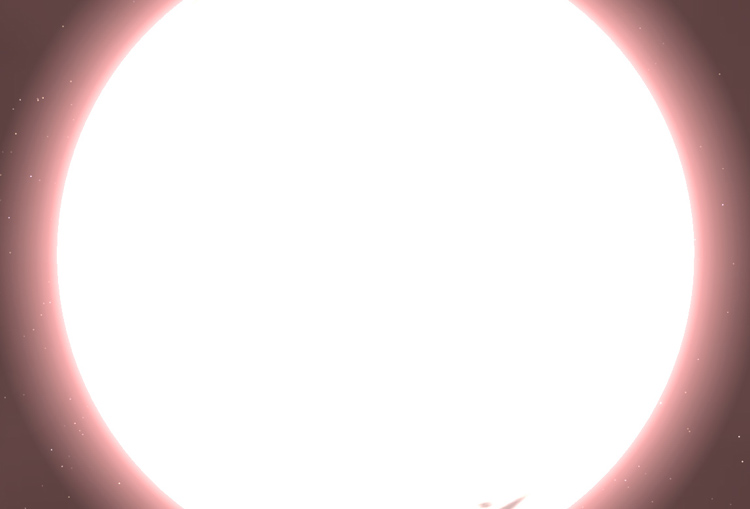
, . , – .
, , , , , .
, , , - .
«», , .

, - , , , , . , , 359 . , .
The last stars of the main sequence in our universe just dried out. The only remaining objects that have the mass of a star are white dwarfs, neutron stars and black holes. Brown dwarfs also remained.
The planets left their orbits and left to drift through space, ending their lives in black holes.
In this era, energy is generated only from proton decay and particle annihilation . Neutron stars, white dwarfs and black holes are now the only remaining objects in space. Because of such a huge age, all the planets and moons broke up into their constituent particles, or were absorbed by the remnants of stars.
. , . .
.
, , , .
… .

PS , , ,
All that is stated here - only assumptions and theories, it is quite possible that all or some of the events will be different. The entire post is presented in the form of a time-tape from 10,000 to 10,100 years, and contains many interesting pictures and links to the wiki, reading a lot and interesting.
10,000 - 15,000 N.E.
Hypernova of the star system This Carinae begins to affect our region of the Galaxy
This Kiel is one of the largest and most unstable stars in our galaxy. Its temperature is so high that its gravity is not able to keep the gas flowing from its surface along the formed upstream from it. It was first noticed in 1843, when its magnitude (read the magnitude of the glow) reached -0.8, making it the second brightest star in the night sky.
She subsequently subsided for a while, and again "lit up" in the late 1990s. This fluctuation continues with periodic flashing and fading, and will continue until the inevitable happens. Unable to cope with its own mass and density, it collapses and then turns into one of the deadliest forces known in nature - into the hypernovae.
For a while, this colossal explosion illuminates the entire galaxy. It will be bright enough to notice from Earth during the daytime, while at night it is comparable to the full moon.
But much more harm will bring killer streams of gamma radiation emitted by a dying star. They will be thrown out at such high energies that even systems in thousands of light years from Eta Carinae will be affected. As a result, on numerous planets in our region of the Galaxy there will be an extinction of living organisms at this time.

22,000 N.E.
The place of the Chernobyl disaster becomes completely safe.
The Chernobyl explosion, which occurred in 1986, was the worst nuclear accident in history, infecting tens of thousands of square kilometers of land. The radiation at the center of this incident has now reached an insignificant level at which a person can live safely.
In any case, the old buildings on the site is long gone, and, in fact, the Earth is already completely unrecognizable.

')
30,000 N.E.
The first wave of subluminal ships reached the nucleus of the Galaxy
The central region of the Galaxy is located 27-28 thousand light years from Earth. In its center lies the largest black hole in it - a supermassive black hole . Having passed through many millennia, the first wave of subluminal ships finally reached its environs.
There are no people on board, they are fully computerized and autonomous. Trillions, they are self-replicating using stellar and planetary material in their path. The systems on ships that appeared during this voyage evolved and evolved thanks to artificial intelligence. This is almost the same as the awakening of the galaxy itself and its acquisition of self-awareness.
There is no competition for owning the core of the galaxy. Wars, greed, and archaic concepts of nations and nationalities have long since disappeared, leaving only intellectual creations united by one common goal.

In addition to the black hole, there are dense clusters of ancient, metal-rich stars, separated by just a few light weeks or even days. They can provide innumerable reserves of resources for fleets arriving.
Gamma radiation is so high in this place that almost no biological creature is able to survive here, except for the strongest bacteria of extremophiles. If an observer could stand on a planet close to the galactic nucleus, the sky above him would look like a blinding screen of light and color.
Reaching the center of the galaxy, now all the forces will be directed to research its far side and the secrets that lie there. Dozens of globular star clusters have already been passed.

35 000 N.E.
Ross 248 becomes the closest star to our Sun.
Proxima Centauri was the closest star to us before. Ross 248 is a red dwarf whose mass is about 12% of the mass of the Sun, and a radius of 16% of the radius of the Sun, and only 0.2% of its brightness. Nevertheless, it also experiences fluctuations, periodically fading out and flashing for a few minutes.
In 2010, the Ross 248 was 10.3 light years from Earth, with a radial velocity of 81km / s. In 35000 AD she is closer to us than Proxima Centauri. It will reach the point closest to us in 38000, having passed 3.1 light years, before another distance from us, moving farther from the Sun than Proxima Centauri, in 44000.

42 000 N.E.
Voyager 1 passes near the red dwarf AC + 79 3888
Launched by NASA in 1977, Voyager 1 continues to drift in interstellar space. Now it passes around AC + 79 3888, M-type stars from the Giraffe constellation, near the North Star. His next version, Voyager 2, will reach Sirius in about 298,000 AD.
52 000 N.E.
KEO - time capsule, enters the atmosphere of the Earth
KEO - should have been launched in 2012 (the launch was postponed until 2014) and was in orbit of the Earth for 50,000 years - the time elapsed since the first people began to draw in the caves.
The project was supported by UNESCO and ESA (European Space Agency) and other institutions.
People could post their messages. They were encoded into a glass, radiation-resistant DVD, along with instructions on how to assemble a DVD reader. A sample of human blood, earth, air and sea water was also placed on board.
The capsule itself is a hollow sphere, 80cm in diameter. A map of the Earth is engraved on the sphere, and the sphere itself is wrapped in a layer of aluminum, a thermal layer and several layers of titanium, separated by a vacuum. The sphere is resistant to cosmic radiation, atmospheric resistance (at the entrance) and the effects of space debris.
Placed into an orbit 1800km above the Earth, the satellite slowly approached it a few tens of meters each year. When he finally enters the atmosphere, his thermal layer will begin to emit a bright, artificial glow that signals his return.
100,000 N.E.
The red hypergiant VY of the Big Dog exploded, leaving one of the largest supernovae that the Galaxy has ever seen.
VY Big Dog, about 1800-2100 times larger than our Sun, is the largest star in the Milky Way known to us, as well as the brightest. It is located 4900 light years from Earth, in the constellation Bolshoy Dog . It is considered very unstable, throwing a huge part of its mass into the surrounding nebula. In 100000, it finally exploded, leaving behind a supernova, bright enough to be seen in the daytime from Earth.

200,000 N.E.
The constellations previously seen from Earth have now been unrecognizably rebuilt.
Proper movement — the constant movement of celestial bodies due to a change in their orbits or the testing of the consequences of the Big Bang, radically changed the view of the night sky from Earth. Stars simply move at different speeds, depending on how the star was formed from its parent cloud of dust. In the year 50,000, constellations began to blend into new forms, and in the year 200,000 they became completely unrecognizable. This includes such famous star groups as Ursa Major , Orion , Perseus and Gemini . As a result of changes in the axis of rotation of the Earth, Gamma Cepheus , Yota Cephei and Vega assumed the position of the Polar Star

298 000 N.E.
Voyager 2 flies to Sirius
Voyager 2 was the second unmanned probe launched in 1977 to explore planets outside the solar system. Identical in appearance and functionally with its previous version, Voyager 1, it was launched on a slower, tortuous path to stay in the ecliptic plane. This allowed him to visit around Uranus and Neptune, after using Saturn's gravity in 1981 and Uranus in 1986 to disperse.
In 2010, Voyager 2 was in the region of 92 AU. (13.75 billion kilometers) from the Sun, deep in a scattered disk , moving away by about 3.26 AU. in year.
The probe lives for thousands of years in the emptiness of interstellar space. He passes Sirius, leaving behind him more than 25 trillion miles traveled. Sirius - the brightest star in the earth's sky.

1,000,000 N.E.
Computers the size of a planet rule the ball in a local group of galaxies, AI controls all government and other systems, our descendants live in Kardashev’s 3rd type civilization
Pure-biological people are a great rarity now. Although free to come or go when they want, they have little or no influence on the governmental systems of the Earth or anything else that is completely subordinate to artificial intelligence. As a species, homo sapiens continued to evolve. This has led to an increase in the size of the skull, an almost complete absence of hair, lengthening of the limbs, a stronger immune system, and greatly increased longevity.
Most people have long gone from these primitive forms, going to robotization and reaching almost immortality. The entire Milky Way has been explored by these transhumans and their intellectual ships.
Traveling faster than the speed of light is now possible thanks to the Alcubierre engines , which are compact enough to be placed even in single-seater vessels. They use colossal energies, affecting the spatial matter in front of them and expanding behind them. This allows you to bypass the laws of relativity, and makes it possible to fly even to neighboring galaxies, like M31 (Andromeda) and M33 (Triangle) .
Computers the size of a planet are built in all local galaxies, using all the resources available to it. All "dead" planets, comets, moons and asteroids, which are now uninhabited, are being "rebuilt" into such machines, forming a huge network the size of millions of light years in space. Everyone is able to instantly contact anyone else, regardless of distance.
A few extraterrestrial (alien, previously unknown) civilizations have already made contact. Ancient ruins were also discovered in many worlds, indicating advanced civilizations that somehow became extinct or destroyed themselves in the distant past. Thousands of other planets have been discovered with rich ecosystems full of diverse vegetation and animal (or other) life. Most of the inhabitants of the fauna are small creatures or even insect-like creatures, but some are more developed and possess intelligence comparable to mammals such as dolphins, monkeys and cats (note lane - and damn it dogs, dogs!).

Most of the purely biological people avoid areas of the nucleus in all galaxies, they are filled with extremely high concentrations of gamma radiation, black holes and other hazards that are dangerous even with today's technology and protection.

1,400,000 N.E.
Oort cloud may soon be destroyed due to the approaching Gliese 710
An orange dwarf star, Glize 710, passes in 1.1 light years (70,000 AU) from the Sun. It is close enough for the Oort cloud surrounding the solar system to collapse (disperse) due to the gravitational interaction of Gliese 710 with it. A rain of comets heading for the solar system.
At the closest point of passage from Earth, Gliese 710 will be the brightest star visible from Earth.

2,000,000 N.E.
Pioneer 10 reaches the Aldebaran system
Pioneer 10 was the first space probe to pass through the asteroid belt and pass over Jupiter, which he did in 1973. After completing his mission, he began to move in the direction of Aldebaran - the star of the red giant, for 65 light-years, located in the constellation Taurus .
The last contact with the probe was made in 2003, when a very weak signal was received from a vessel, 12 billion kilometers from Earth. The connection attempt in 2006 was unsuccessful.
Going at a speed of 2.6 au. per year (388954800km / year), Pioneer-10 approaches the Aldebaran system in 2000000.
The probe carries with it an “interstellar letter” for the case of its capture by aliens. This record depicts nude men and women, along with symbols that represent information about the probe.

4,000,000 N.E.
Pioneer 11 reaches the Lambda Orion system
Pioneer-11 follower of Pioneer-10. Launched in 1973, it successfully completed a span across Saturn in 1979, before going out into interstellar space, departing in the opposite direction from Pioneer-10.
After four million years, it passes the Lambda of Orion, a B-type blue dwarf star, about 125 light years from Earth. Like its predecessor Pioneer 10, this probe also has a plate with a message from people.
7,200,000 N.E.
Mount Rushmore has disappeared due to erosion
Without the intervention of people, the famous faces of the presidents carved into this rock have now disappeared. The rate of erosion of granite is about one inch per 10,000 years.

7 600 000 N.E.
Phobos is shattered by the gravity of Mars
Phobos - the largest and closest of the two satellites of Mars. Because its orbital period is shorter than the Mars day, tidal decelerations affected its orbital radius, bringing it closer to Mars by about 20 meters every 100 years.
On this day, he reached the limit of Roche .
Phobos begins to disintegrate. It gradually becomes a ring over the next three million years.
Neptune’s biggest moon, Triton , will share the same fate.

10,000,000 N.E.
T Compass threatens Earth with lethal doses of gamma radiation
T Compass is a two-star system in the constellation of Compass . One of them is similar to our Sun, and the second is a white dwarf . Due to the strong gravitational effect of the white dwarf, a part of matter from another star constantly flows into it, which leads to periodic thermonuclear explosions.
Around this time, it reaches the Chandrasekhar limit , which leads to collapse, and now it is a type 1a supernova. After this catastrophic event, 10 million times more energy is released into space than with a conventional explosion, which leads to the appearance of a new star, which is comparable to 20 billion yttatons of TNT.
This system is only 3260 light years from Earth — close enough to hurt our solar system badly. If, of course, the Earth is not yet protected by the technologies developed over these years, gamma radiation can destroy the ozone layer, which will lead to mass extinctions of biological species.

The triton fell apart, and a ring formed around Neptune.
This if we assume that Triton still exists in the form that we know. The remnants of humanity could transform it into artificial structures. Even Neptune may no longer exist, people could pump out all the hydrogen and helium from it for use in interstellar ships and industrial processes.

30,000,000 - 40,000,000 N.E.
At some point during this time, an asteroid with a radius of 10-20km goes straight to a collision with the Earth.
Accidents of similar magnitude usually occur every 100 million years. The last time this happened 65 million years ago, which led to the extinction of dinosaurs.
If humanity is not going to do something to protect the Earth, then all life left on the planet will be in danger of the same mass extinction this time.
Such a collision will release approximately 4 * 10 ^ 23 joules of energy, which is equivalent to 100 million megatons of TNT. For comparison, the most large-scale explosion made by man is the King of Bombs explosion, which is equivalent to only 50 megatons.
If it falls into the ocean, then a huge tsunami will reach the water, reaching thousands of feet in height.
A cloud of super-hot dust, ash and steam will scatter from the crater, which will be instantly dug by an asteroid during its “landing”. The exploded earth and pieces of the asteroid ejected from the atmosphere by an explosion will be heated, and after entering the atmosphere, they will even roast the surface of the Earth and cause huge fires. At this time, colossal shock waves trigger global earthquakes and volcanic eruptions. Raised dust and various particles will cover the entire surface of the Earth for several years, creating a harsh environment for the survival of living organisms. Shocking amounts of carbon dioxide released due to the destruction of carbonaceous rocks will cause a greenhouse effect.
For a long period of time, the sun's rays will not be able to reach the surface of the Earth, due to dust particles in the atmosphere, which will cause a strong cooling. Plants can not continue to live without photosynthesis, which would entail the disappearance of the entire food chain.

50,000,000 N.E.
The African continent faces Europe, forming a new mountain range comparable to the Himalayas
As a result of this, there is no longer the Mediterranean. The Red Sea, the Black Sea and the Caspian Sea also disappeared. At the same time, the Atlantic Ocean continues to expand, and Southeast Asia merges with Australia.
100,000,000 N.E.
Milky Way galaxy stabilized after early collisions
Our galaxy is surrounded by dozens of smaller dwarf galaxies. They sometimes pass through the disk of the Milky Way, partially destroying it and themselves. One of these cases occurred approximately 100 million years BC. This was confirmed by observations of 300,000 nearby stars, the motion of which showed the echo of the “bell ringing”. The stars moved up and down at speeds from 20 to 30 kilometers per second, rotating around the center of the galaxy at a speed of 220 km / s.
Another 100 million years passed before the motion of the stars stabilized. Now there is no north-south asymmetry and the vertical motions of the stars are back to their equilibrium states.

150 million N.E.
The Atlantic Ocean begins to "close"
The Mid-Atlantic Ridge makes North and South America and Africa move together. Australia has completely merged with Indonesia and Antarctica.
225 000 N.E.
Our solar system has lived a whole galactic year.
At this moment, our Sun has completed another revolution around the Galaxy - it has turned 21 galactic years.
The sun's orbit is distantly elliptical, impaired due to galactic spiral arms and uneven mass distribution. In addition, the Sun hovers up and down relative to the galactic plane, about 2.7 times per revolution.
The passage of the Sun through the sleeves with greater density coincided with mass extinctions on Earth, as a result of the increasing frequency of collisions with cosmic bodies and a large amount of incoming energy on the planet.
The orbital speed of the Sun relative to the center of the Galaxy is approximately 251km / s.

250,000,000 N.E.
A super-continent is forming on Earth.
The next Pangea - Pangea Ultima , is formed from the confluence of all continents.
Our Sun is getting noticeably hotter and brighter, the average temperatures on the planets rise by a few degrees. Most of the Earth is covered with deserts.

600,000,000 N.E.
Total solar eclipses are no longer possible on Earth.
Due to the tidal acceleration , the moon was moving away from the Earth by about 3.8 cm per year. In 600 million a year, the distance has increased by about 23000km. At the same time, the Sun has noticeably grown in size.
As a result of this, the moon is no longer large enough in our sky to completely block the solar disk. This is true even when the moon is in perigee, and the Earth in aphelion .
The gravitational influence of the moon on the Earth has also decreased, and as a result, the waves in the ocean have decreased.
750 million N.E.
Dwarf elliptical galaxy in Sagittarius merged with the Milky Way
The Sagittarius Dwarf Elliptical Galaxy is a small elliptical galaxy (Sag DEG) orbiting the Milky Way. Constantly she was exposed to the gravity of her big neighbor, stretching and torn because of the huge tidal forces. Now she is completely absorbed into the Milky Way.
When it was just opened, astronomers believed that Sag DEG was already quite destroyed. , , . , 50000 . , , , , .
Sag DEG 10 , . , , .

1 000 000 000 ..
,
The brightness of the Sun increased by 10%, causing an increase in temperature on the Earth's surface to an average mark of 47 ° C. Due to the fact that the sea and the ocean began to evaporate, the atmosphere became heavier, a strong greenhouse effect quickly appears. Mars has become more suitable for life than Earth.

3,800,000 N.E.
The Andromeda Galaxy begins to collide and merge with our Galaxy
, , 964 . , - -, « ». , , 1612 . 31 1764 «» , . 1887 , - 1950- .
, . , – , . 2.5 , 400000/. , , .
3 800 000 000 , . , . , . . , , .

5 000 000 000 ..
. 200 .

12 000 000 000 ..
, . , – .
100 000 000 000 ..
, , , , , .
, , , - .
1 000 000 000 000 ..
-
«», , .

2 000 000 000 000 ..
, - , , , , . , , 359 . , .
100 000 000 000 000 ..
The last stars of the main sequence in our universe just dried out. The only remaining objects that have the mass of a star are white dwarfs, neutron stars and black holes. Brown dwarfs also remained.
The planets left their orbits and left to drift through space, ending their lives in black holes.
10,000,000,000,000,000,000,000,000,000,000,000 N.E.
The era of degeneration of the universe
In this era, energy is generated only from proton decay and particle annihilation . Neutron stars, white dwarfs and black holes are now the only remaining objects in space. Because of such a huge age, all the planets and moons broke up into their constituent particles, or were absorbed by the remnants of stars.
10 000 000 000 000 000 000 000 000 000 000 000 000 000 000 000 000 000 000 000 000 000 000 000 000 000 000 000 000 000 000 000 000 000 ..
. , . .
10 100
.
, , , .
… .

PS , , ,
Source: https://habr.com/ru/post/151095/
All Articles